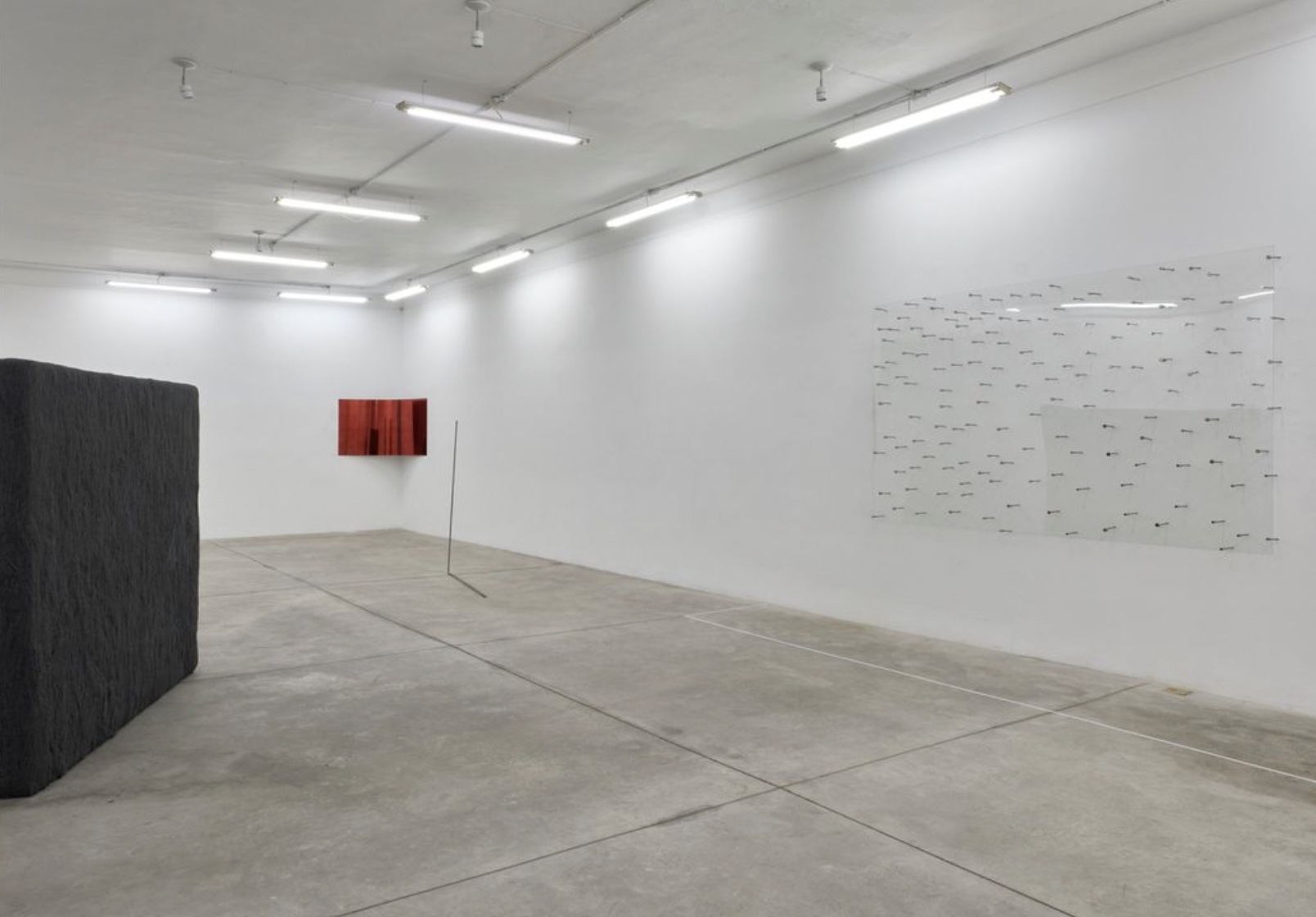
Manuela García
Coreografías de la materia
Exhibition
-> Jul 22 2023 – Oct 8 2023
We pause. It’s not a question of subjects and objects, but rather of the assemblages containing and delimiting them.
Palpitations.
Touches.
Folds and unfolds among materials,
thoughts, sounds, certainties,
indeterminacies, gaps, and enigmas.
A living constellation where properties—temporal and fluctuations—are the result of the relationship and not the other way around.
(((Vibrations)))
Energy
The initial movement is a distance.
Turning one’s back on contemplation: it’s not about a body looking to decode and master.
This exhibition condenses various stages of Manuela García’s work in order to show the ethics running through it. Her production breaks with the aesthetic tradition that founds modernity itself: a subject that feels in order later to know everything about an object. Faced with the arrogance of power, a swaying: choreography in which taking a stand does not mean rushing to define, promise, and constrain what happens.
Here, the objects do not render servitude to the gaze,
but rather constitute an environment in order to become a body.
It is not for having a body that the body is ours. A body begins in its flesh, in its organs and bones; nevertheless, its unity is impossible—it’s always overflowing, a body between bodies. Manuela’s work ethic operates with a basis in this knowledge: a body is made in the middle of, touching what surrounds it (near or far). Human and non-human membranes. Everything has the same value; its relevance is its uniqueness; its uniqueness consists in its properties and the assemblages of which it is part. An alchemist workshop put in play in order to suggest thresholds.
Logic not of what is, but rather of what is being between.
Textures
R o u t e s
The philosopher Jane Bennett works on a division that broadly resonates with this exhibition. In Vibrant Matter she writes about the difference between objects and things. Objects depend on the subject’s judgment and appear before them with a name, an identity, and a pattern, while things have a conatus: that is, a perseverance in their own existence, a vibration—physical and enigmatic—that may or may not come into contact with subjects and that does not depend upon their understanding in order to exist. This is what Bennett calls thing-power.*1
Making art in order to trace a body, starting from thing-power in order to open a space for hospitality without debt. The host is the relationship itself: the perseverance of one body next to another—the sensation as effect of the assemblage. If language, then palimpsest of the framework.
Breaths,
exhalations,
intonations.
Manuela’s ethics is full of sensations resulting from working with specific materials. Each element is both cosmos and archive. Concrete surfaces that we affect and that affect us. Complicities and ruptures.
Wool. Wood. Glass. Metal. Wax.
Far from the logic of the banner that seeks to define what art is in order to offer rankings, Manuela García’s ethics overcomes the temptations of discourse in order to invite us to pay attention.*2
A t t e n d i n g
Opening perception and thought to the components of things. Not anticipating their function based on forms, but rather establishing a unique choreography with them. Giving ourselves the time to construct the assembly with the patience of a bird making a nest, the intensity of the sun feeding a plant, or the rhythm of the gaze that transforms into touch with matter.
Welcome
— Sandra Sánchez, Curator
1: Jane Bennett, Vibrant Matter: A Political Ecology of Things (Durham and London: Duke University Press, 2010).
2: In her book Perder la cara (Losing Face, Cactus, 2021) the philosopher and choreographer Marie Bardet speaks about attention as a way of breaking the dominance of the subject over the object. Attention does not anticipate but rather wages on being between, in relation and reaction.